Last Update: 8 October 2023
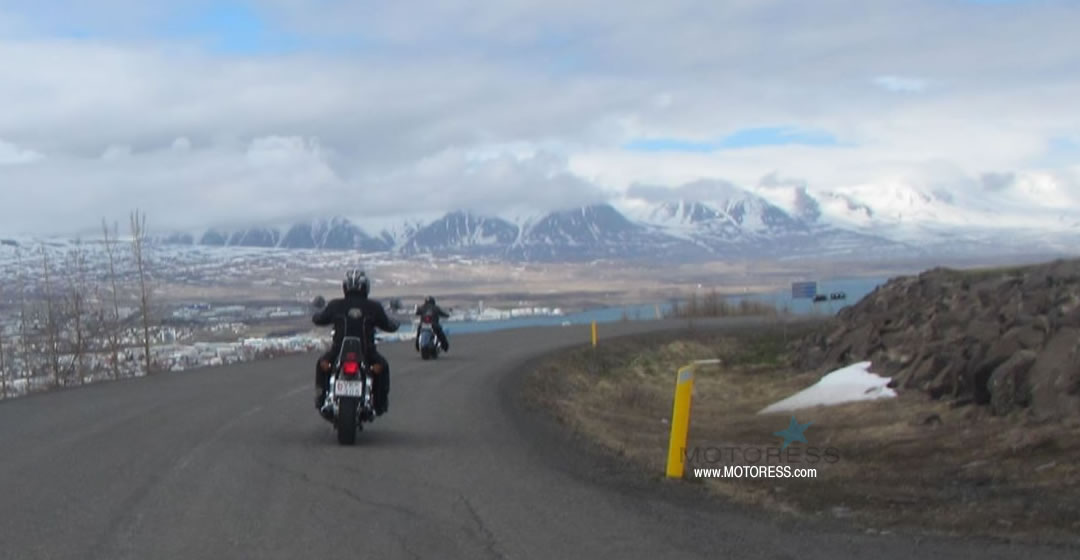
If you live in a country where cold, snowy winters occur, with some preparation and good gear there’s not much stopping you from riding all winter long. If you do plan to keep riding your motorcycle in cold weather, the following tips and preparations will keep you and your motorcycle in tip-top condition.
With each winter and ever-changing conditions global warming seems to create, many riders are opting to keep the motorcycle running and riding. With the use of heated motorcycle gear outside of a few days or weeks it works out for many riders now to simply opt out of winter storage. Preparing your motorcycle for riding in colder temperatures is not only worth it but will protect your motorcycle’s life and ensure it performs well for you on colder air/road surfaces.
Harsh Conditions and Motorcycle Vulnerability
In regions where winter truly takes hold, road maintenance crews swiftly deploy salt trucks at the slightest sign of freezing temperatures, covering virtually every traveled road surface with rock salt. Unfortunately, this combination of salt and low temperatures can lead to condensation and prolonged moisture exposure, creating an ideal environment for corrosion to take hold on your motorcycle’s sensitive components.
Your motorcycle constantly faces the relentless assault of winter’s elements, but you have the power to fight back! By dedicating some care, attention, and proactive measures, you can shield your bike from these wintry adversaries. Be cautious of products claiming to be “miracle” protectants or “plastic” sprays that promise to winterize your motorcycle. These products often prove challenging to remove, leaving your motorcycle with an undesirable tacky residue. The most effective solution remains thoughtful and thorough preparation.
Preseason Motorcycle Maintenance
Just as you would with your automobile, it’s essential to schedule a preseason service for your motorcycle. Ensure your preferred dealer performs all the standard winter preparations to keep your bike in top shape. However, if you’re handling this yourself, there are a few key aspects to inspect, with the most critical one being your coolant.
To assess your coolant’s antifreeze properties, you can employ a tool called a hydrometer. Wondering what a hydrometer is? It’s an instrument designed for measuring the specific gravity of liquids. Typically constructed from glass, it comprises a cylindrical stem and a weighted bulb (often filled with mercury or shot) to keep it upright in the liquid. Here’s how it works: Pour the liquid into a tall jar, then gently submerge the hydrometer into the liquid until it naturally floats. Take note of the point where the liquid’s surface touches the stem of the hydrometer. Most hydrometers include a paper scale inside the stem, allowing you to directly read the specific gravity or density relative to water in grams per milliliter (g/mL).
More Key Aspects to Inspect: Those Often Overlooked
- Coolant Inspection: Your motorcycle’s coolant is essential for preventing freezing in cold temperatures. Verify its antifreeze properties using a hydrometer, as explained earlier.
- Sprockets and Chains: These components are constantly exposed to water, salt, and grit during winter riding, demanding almost daily lubrication and occasional cleaning to maintain optimal performance and durability.
- Motor Oil Selection: In colder weather, motor oil becomes thicker and flows more slowly. It’s imperative to use the right grade for winter riding, which might mean switching from what you’ve used during the warmer seasons. Additionally, an oil and filter change is essential for maintaining engine health.
- Warm-Up Time: Unlike the warmer seasons, your motorcycle will require extra time to warm up before you ride off. This ensures the engine reaches its ideal operating temperature, guaranteeing that fluids circulate adequately for optimal performance and engine longevity.
By paying attention to these often-neglected details, you’ll prepare your motorcycle for winter riding and extend its life, enabling you to enjoy your two-wheeled adventures even in the coldest of seasons.
Post-Ride Maintenance to Combat Corrosion
To shield your motorcycle from corrosion, there are two effective approaches you can consider:
- Regular Cleaning: After each ride, give your bike a thorough wash and rinse. This helps remove any salt, grime, or debris that can contribute to corrosion over time.
- Protective Coating: Alternatively, you can apply a layer of protective material such as grease and then clean your bike often. This method forms a barrier against the elements and helps prevent corrosion.
In some coastal or salt-prone areas, like the Caribbean where I lived for many years, where salt air can quickly corrode engine surfaces, taking extra precautions is crucial. For instance, daily spraying of WD40 on all exposed metal parts, excluding tires, seats, foot pegs, and handlebars/grips, can be highly effective in preventing sea salt corrosion. While this may require regular reapplication, it provides excellent protection. Remember, grease can also be washed off in the spring if necessary.
If you opt for regular cleaning, investing in an inexpensive power-washer can be a rider’s best friend, helping you keep your beloved motorcycle spotlessly clean. These portable power or jet washers are particularly effective at removing salt residues from your bike.
Additionally, after the rinse cycle, a helpful tip is to tilt your motorcycle with control, slightly to the left and right, to ensure any excess water trapped in engine block crevices is drained away. These simple steps can go a long way in preserving the longevity and appearance of your motorcycle.
Basic Care: Riding Your Motorcycle In Cold Weather
|
|
WRAP IT UP:Your front fork slider (lower part of conventional telescopic forks) which bears the brunt of abuse year-round, faces especially harsh conditions during winter rides, enduring the onslaught of road grit and corrosive salt. To safeguard your forks, consider using shrink-wrap or window insulation shrink-wrap film. Applying this protective film to cover the front portion of the slider can provide effective protection against these harsh winter elements. |
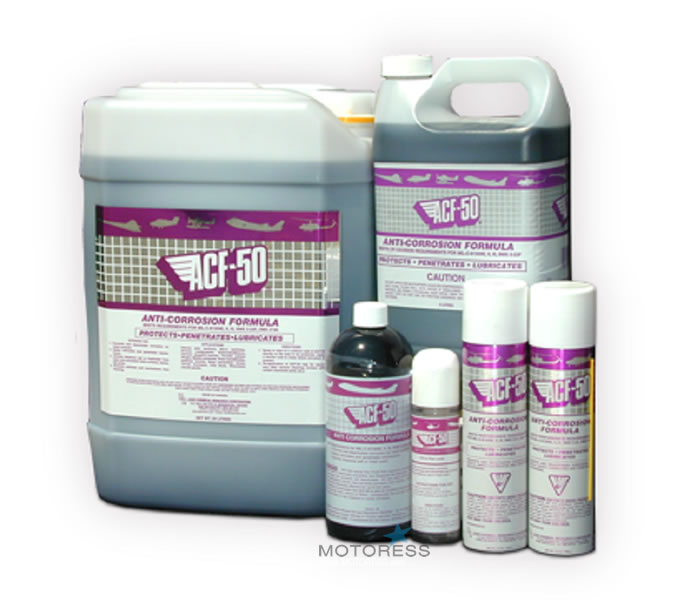 |
GREASE AND PROTECT IT WITH ACF-50.Originally developed to safeguard aircraft from both existing and potential corrosion, ACF-50 (Anti-Corrosion Formula) stands as an indispensable asset for motorcyclists. Produced by Lear Chemical Research, a Canadian company with a legacy dating back to 1979, ACF-50 excels in forming a proactive, nearly invisible protective layer. This dynamic film not only eradicates pre-existing corrosion cells but also acts as a formidable barrier against the formation of new corrosion. When applied judiciously, ACF-50 should be directed to key areas such as switches, the undersides of the tank and seat, as well as other vulnerable, exposed sections of your bike. Remarkably, it possesses the unique ability to chemically neutralize the corrosive effects of road salt, while also rendering water almost incapable of adhering to treated surfaces. |
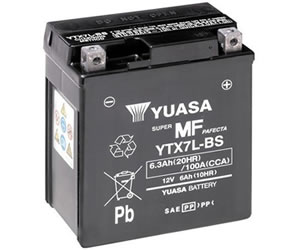
|
BATTERY:Sealed batteries need little care when it comes to maintenance especially if you’re regularly riding. However, if you start into the winter season with a battery which is weak, best to replace it as colder weather can expose deficiencies, often due to old age. Also, for standard batteries, top up fluid levels and apply ACF-50 to terminals to protect against the cold’s effects. For parked days, if you can keep your battery on a tender. |
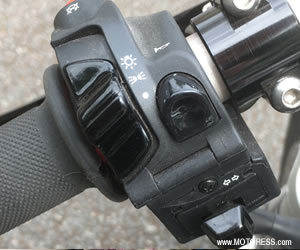 |
PROTECT YOUR SWITCHGEARSimilar to “GREASE IT” above, and with more moisture in the air, corrosion also attacks switchgear and electrical connections. Protecting your switchgear from corrosion is crucial, especially in high-moisture conditions. ACF-50 can also be applied here. Begin by loosening the screws that hold the switchgear together, then use a spray or apply it to a cloth before gently coating the switchgear. Be sure to extend this treatment to all electrical connections, with particular focus on exposed ones like brake lights and side stand cutouts, as they are more vulnerable to corrosion. |
|
|
LIGHTING:As daylight hours shorten, it’s a good idea to consider upgrading your lighting is essential for enhanced visibility, both for your own safety and for others on the road. Consider upgrading to a higher-performance bulb or LED lighting to achieve better brightness. These options offer increased illumination without breaking the bank. For even more advanced lighting, High-Intensity Discharge (HID) headlamp kits are available, providing exceptional brightness. However, it’s worth noting that these kits can be relatively expensive. |
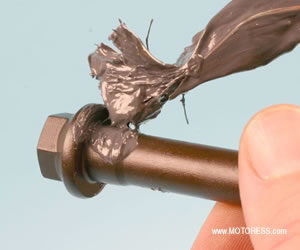 |
GREASE AND LUBRICATION:To prevent bolt heads from accumulating grime without the mess of traditional grease, consider this alternative: swap out cadmium-plated fasteners with stainless steel counterparts. Cadmium is a toxic metal, similar to zinc but used primarily in batteries and pigments, including some plastic products. Investing a few dollars in replacements for engine and fairing fasteners is a wise move. When installing stainless steel fasteners, apply copper grease to the tips as you thread them in. This preventive measure ensures they won’t seize, providing long-lasting protection without the environmental concerns associated with cadmium. |
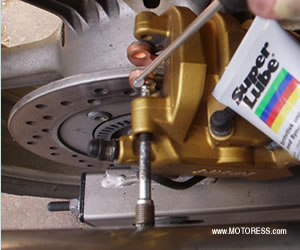 |
BRAKE SYSTEMS:These are vulnerable as well to road sludge when riding your motorcycle in cold weather. The pins that keep the pads and exposed areas of the pistons. These need to be greased—sparingly using copper grease or special brake grease. Wash them regularly with a toothbrush and soapy water and follow it by a blast from an aerosol brake cleaner and grease. |
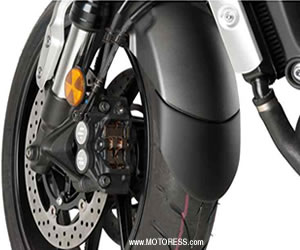 |
MUDGUARD FOR FRONT WHEELInstalling a mudguard or mudguard extender is a smart move to protect vital components like radiators and oil coolers from becoming caked with road debris. These accessories serve as effective barriers to prevent the accumulation of grime and dirt on these essential parts. For added protection, consider adding huggers for the rear wheel as well. They help prevent your bike from being coated with splashes and debris kicked up by the rear tire. |
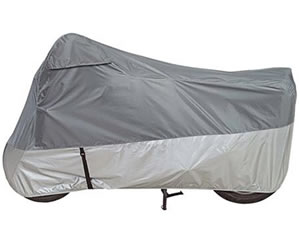 |
MOTORCYCLE COVER:If you have no choice but to leave your motorcycle outside, a motorcycle cover is a must. Invest in a high-quality motorcycle cover that fits your bike snugly. This will shield it from rain, snow, and other environmental factors. Even in moist conditions, air can infiltrate, bringing along moisture and potentially salt, especially if you’re parked on a busy street. Keep the bike coated with a water-repellent spray ACF-50 mentioned above is best. And be sure to cover up your bike when it’s dry. If not you’ll just be locking in the moisture already present which will cause further corrosion. |
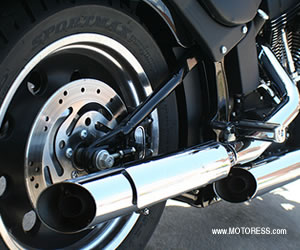 |
EXHAUST SYSTEMS:These are the most difficult to protect. It’s essential to avoid using plastic-coating grease, as it can melt onto the hot pipes and create a messy cleanup task later. Make it a practice to clean the exhaust pipes while they are still warm. This can help prevent the buildup of grime and contaminants. Try also to replace mild steel components with stainless steel ones. Stainless steel is more resistant to corrosion and can withstand higher temperatures. |
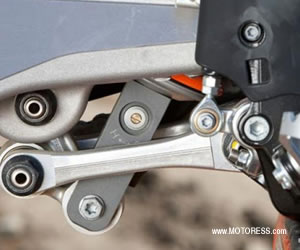 |
REAR SUSPENCTION:Performing a check and greasing of your motorcycle’s linkages and pivot points is an important maintenance task to ensure smooth operation and prevent wear and tear. |
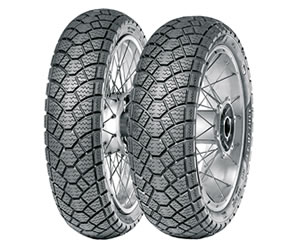 |
MOTORCYCLE TIRES:During the winter or colder weather, it’s important to consider the type of tires you have on your motorcycle. Contrary to popular belief, sticky sport or soft compound tires often struggle to reach their optimal working temperature in these conditions. Instead, touring or street sport tires, known for their heavier construction, tend to generate more internal heat. You can also opt for a pair of motorcycle winter tires – Anlas make them. |
Important Note: When it comes to winterizing your motorcycle or scooter for road use, be aware that your mechanic may not have extensive experience in this area, as many riders typically choose to store their motorcycles during the cold season. As a precautionary measure, consider bringing your own checklist to share with your mechanic, referencing the checkpoints outlined in this article.
Remember, safety should always be your top priority when deciding whether to ride in cold weather. Use your better judgment, and if conditions are hazardous or extreme, it may be wiser to refrain from riding. Your safety and well-being are paramount.
Ride safe and stay warm!


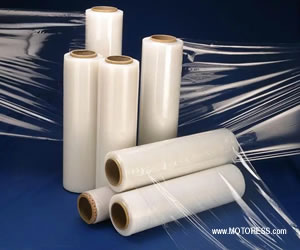
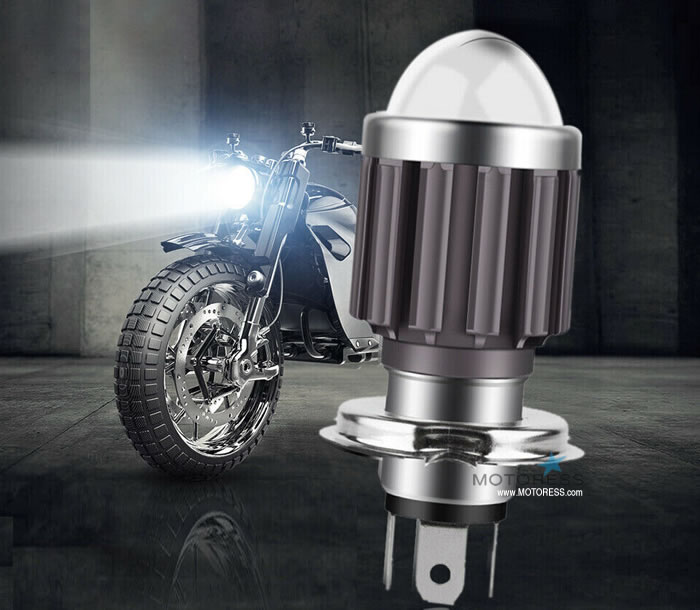

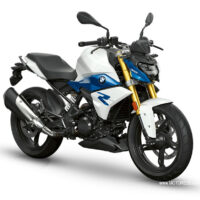

3 comments
Dielectric grease is a good idea for any exposed electrical connections and battery terminals.
Thank you that’s a great tip!
So much great advice, thank you. I live in Wyoming and have been riding more this mild winter. As a fairly new woman rider I would not have thought about The aircraft lube or even the need for that, you learn something new everyday!
cheers to getting fresh air.. even if it is under 40 degrees.